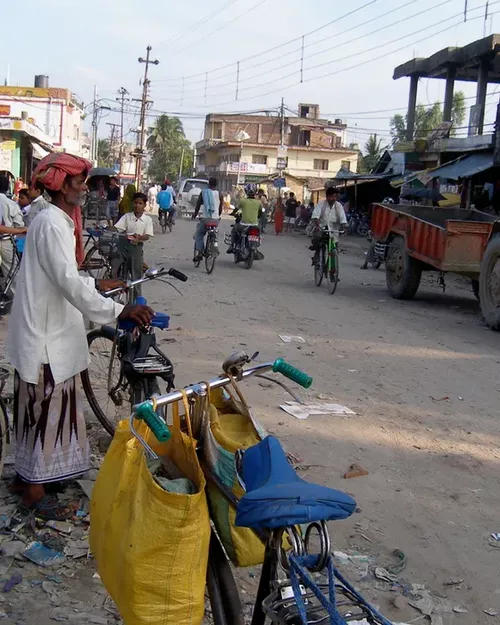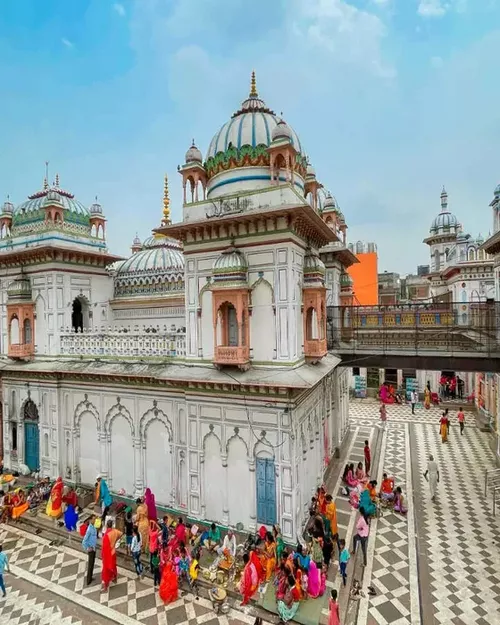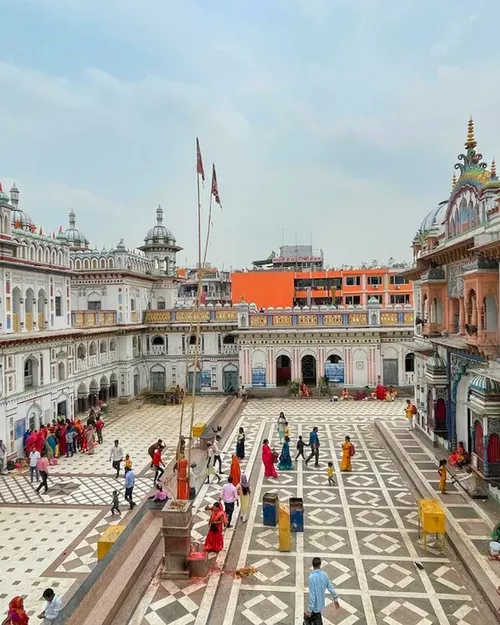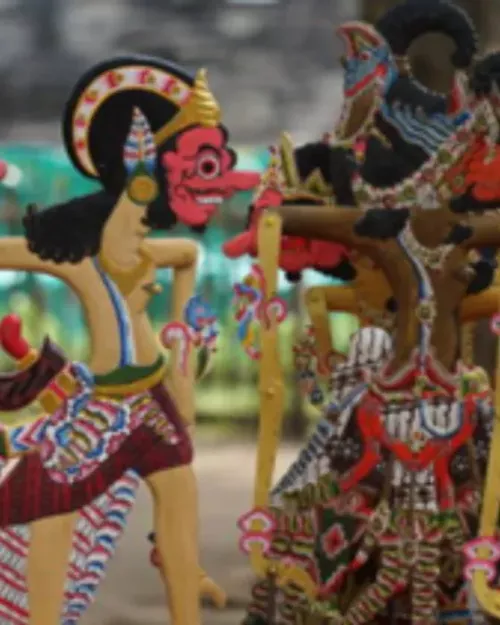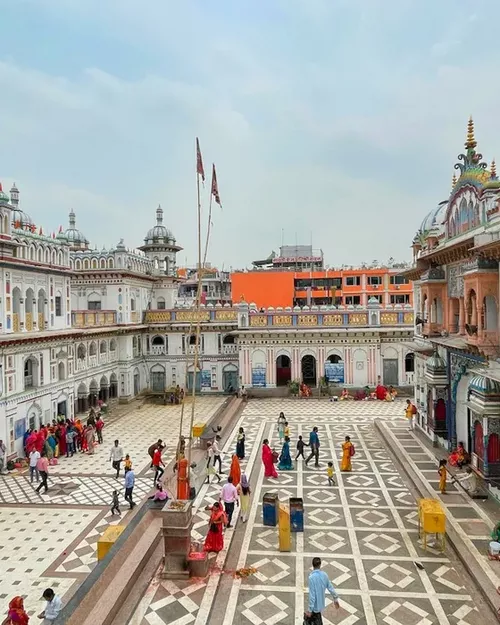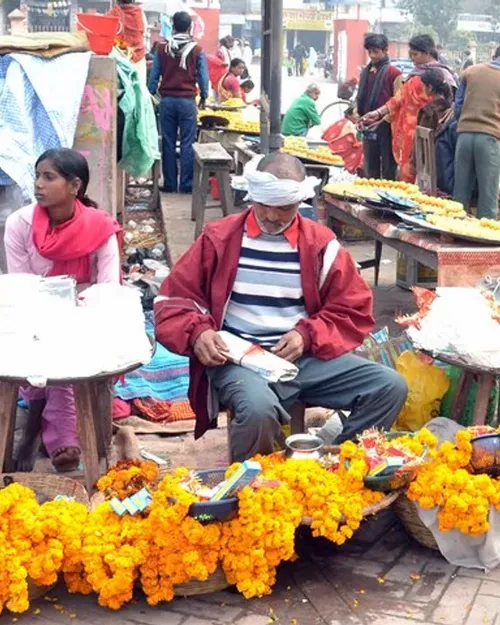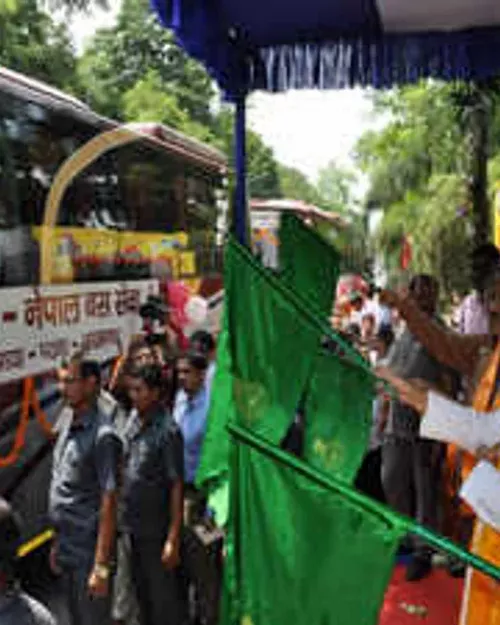Janakpur is popular for
Janakpur in next 3 month
Weather in Janakpur
December in Janakpur is cool and misty with moderate air quality, making it a pleasant time to visit.
Usual trip duration
A 2-3 day trip to Janakpur allows you to explore the historic and religious sites such as Janaki Mandir, Ram Mandir, and Dhanush Sagar. You can also experience the local culture and traditions of the region.
Very budget friendly
Ideas To Plan Your Trip
Places To Visit
Places To Eat
Frequently Asked Questions about Janakpur
The best time to visit Janakpur, Nepal, is during the winter season, from October to March. During these months, the weather is pleasant and ideal for sightseeing and exploring the city's religious sites and cultural attractions. The temperatures are moderate, ranging from 10°C to 25°C, making it comfortable for outdoor activities. Avoiding the monsoon season (June to September) is recommended due to heavy rainfall and potential flooding, which can disrupt travel plans. Additionally, visiting during festivals like Vivah Panchami (usually in late November or early December) offers a unique cultural experience, although the city may be more crowded during these times. Planning your trip around the cooler, drier months will ensure a more enjoyable and comfortable visit to Janakpur.
Reaching Janakpur is relatively straightforward, with several transportation options available:
| Mode | Details |
|---|---|
| By Air | Janakpur Airport (JKR) has regular flights connecting it to Kathmandu. This is the quickest way to reach Janakpur. Several airlines operate daily flights, making it a convenient option. Upon arrival, you can hire a taxi or auto-rickshaw to reach your destination within the city. Check flight schedules and book in advance, especially during peak tourist season. |
| By Train | Janakpur is connected to Jaynagar in India by a railway line. This route is popular for travelers coming from India. The Janakpur Railway is the only operational railway in Nepal and provides a unique experience. From Jaynagar, which is easily accessible from major Indian cities, you can take the train directly to Janakpur. |
| By Road | You can also reach Janakpur by bus or private vehicle from Kathmandu and other major cities in Nepal and India. The road network is well-maintained, and regular bus services are available. The journey from Kathmandu takes approximately 6-8 hours, depending on road conditions and traffic. Private vehicles offer more flexibility but may be more expensive. |
Janakpur is rich in religious and cultural heritage, with several key attractions that every visitor should explore:
| Landmark | Highlights |
|---|---|
| Janaki Mandir | The most famous temple in Janakpur, dedicated to Goddess Sita. It is an architectural marvel with intricate designs and a beautiful courtyard. |
| Ram Mandir | Located near Janaki Mandir, this temple is dedicated to Lord Ram. It's an important religious site and a place of pilgrimage. |
| Bibaha Mandap | Believed to be the site where Lord Ram and Sita got married. It's a historical and culturally significant place. |
| Ganga Sagar | One of the many sacred ponds in Janakpur, where devotees take a dip. It's a serene place for relaxation and spiritual reflection. |
| Dhanush Sagar | Another holy pond with religious significance. It is believed that Lord Rama broke the Dhanush (bow) here during Sita's Swayamvar. |
| Ratna Sagar Temple | A historical temple built in the 19th century by Queen Ratna, offering insights into local architecture and religious practices. |
Janakpur offers a variety of activities catering to different interests. Here's a list of experiences you can enjoy:
- Religious Pilgrimage: Visit the numerous temples and sacred ponds, participate in prayers, and experience the spiritual atmosphere of the city.
- Cultural Exploration: Immerse yourself in the local culture by attending festivals like Vivah Panchami, which reenacts the wedding of Ram and Sita.
- Photography: Capture the architectural beauty of Janaki Mandir and the serene landscapes around the sacred ponds.
- Local Cuisine: Taste the local Mithila cuisine, known for its unique flavors and traditional dishes. Don't miss out on trying dishes like 'aloo mutter' and 'peda'.
- Shopping: Explore local markets for handicrafts, religious items, and traditional clothing.
- Boat Ride: Enjoy a boat ride on one of the sacred ponds for a peaceful and scenic experience.
- Village Tour: Take a tour of nearby villages to experience rural life and interact with the local communities.
While Janakpur itself has plenty to offer, there are several interesting destinations nearby that you can explore:
| Destination | Highlights |
|---|---|
| Jaynagar (India) | A border town in India connected to Janakpur by railway. It's a bustling town with local markets and cultural experiences. |
| Bardibas | A growing town with good connectivity to other parts of Nepal. It serves as a transportation hub for the region. |
| Sindhuli | Known for its scenic beauty and the Sindhuli Gadhi fort, a historical landmark. |
| Biratnagar | A major industrial and commercial center in Nepal, offering a glimpse into the country's economic activities. |
| Halesi Mahadev Temple | About 6 hours drive from Janakpur. An important pilgrimage site for both Hindus and Buddhists. |
Janakpur offers a vibrant shopping experience with local markets and shops where you can find unique items:
| Market/Location | Specialty |
|---|---|
| Janakpur Main Market | A bustling market where you can find a variety of goods, including clothing, accessories, and household items. It's a great place to experience the local atmosphere. |
| Religious Souvenir Shops near Janaki Mandir | These shops offer religious items such as idols, prayer beads, incense, and other spiritual souvenirs. |
| Handicraft Shops | Look for shops selling local handicrafts, including Mithila paintings, pottery, and woven items. These make excellent souvenirs. |
| Textile Shops | Explore shops selling traditional Nepali and Indian textiles, including sarees, shawls, and fabrics with intricate designs. |
Janakpur offers a delightful culinary experience with a mix of local and international flavors. Here are some of the best places to eat:
| Category | Restaurant/Location |
|---|---|
| Restaurants | Hotel Welcome is known for its good selection of Indian and Nepali dishes. Mithila Yain Hotel & Restaurant is also a great place to sample local Mithila cuisine. |
| Street Food | Explore the street food stalls near Janaki Mandir for local snacks like samosas, jalebi, and chaat. |
| Sweet Shops | Try the local sweets at shops like Peda Ghar. Peda, a sweet made from condensed milk, is a local specialty. |
| Local Dhabas | For an authentic experience, eat at local dhabas, small roadside eateries that serve simple and delicious Nepali meals. |
Vivah Panchami is an annual Hindu festival celebrated in Janakpur with great fervor. It commemorates the wedding of Lord Ram and Goddess Sita. According to the epic Ramayana, Janakpur was the birthplace of Sita, and her marriage to Ram is a significant event in Hindu mythology. During Vivah Panchami, Janakpur transforms into a festive hub, attracting thousands of pilgrims from India and Nepal.
The main highlight of the festival is the reenactment of the wedding ceremony, which takes place at the Janaki Mandir. The idols of Ram and Sita are adorned in wedding attire, and a procession is carried out through the city. Devotees participate in prayers, sing devotional songs, and witness the elaborate rituals performed by priests. The festival is a celebration of love, devotion, and the sacred bond of marriage. It offers a unique opportunity to witness the rich cultural heritage of Janakpur and experience its deep-rooted religious traditions.
Visiting Janakpur during Vivah Panchami provides an immersive cultural experience, but it's essential to plan ahead due to the large crowds and increased demand for accommodation and transportation.
When visiting Janakpur, it's important to be mindful of local customs and traditions to show respect for the culture and religious sentiments of the people. Here are some key cultural etiquettes to keep in mind:
- Dress modestly: As Janakpur is a religious site, it's advisable to dress modestly, especially when visiting temples and sacred places. Avoid wearing revealing clothing.
- Remove shoes: It is customary to remove your shoes before entering temples and other religious sites.
- Show respect: Be respectful of religious practices and traditions. Avoid making loud noises or engaging in disruptive behavior inside temples.
- Photography: Seek permission before taking photographs of people, especially women. Some religious sites may have restrictions on photography, so be sure to check before taking pictures.
- Greetings: Greet people with 'Namaste' (placing your palms together) as a sign of respect.
- Hand gestures: Avoid using your left hand when giving or receiving things, as it is considered unclean. Use your right hand or both hands.
- Public displays of affection: Avoid public displays of affection, as they are not common in Nepali culture.
Janakpur offers a range of accommodation options to suit different budgets and preferences. Here are some of the types of accommodation you can find:
- Hotels: There are several hotels in Janakpur offering comfortable rooms and basic amenities. These hotels usually provide services like room service, Wi-Fi, and on-site restaurants.
- Guest Houses: Guest houses are a more budget-friendly option, offering simple rooms and basic facilities. They are often family-run and provide a more personal touch.
- Lodges: Lodges are another affordable option, typically offering basic rooms and essential amenities. They are suitable for travelers looking for a no-frills stay.
- Budget Hotels: These hotels offer basic accommodation at a lower price point, catering to budget-conscious travelers.
It's advisable to book your accommodation in advance, especially during peak tourist season or festivals like Vivah Panchami, to ensure availability and secure the best rates.
Janakpur is known for its unique Mithila cuisine, which offers a delightful culinary experience. Here are some specific local dishes that you should definitely try during your visit:
- Aloo Mutter: A flavorful dish made with potatoes and peas cooked in a rich gravy. It's a staple in Mithila cuisine and is often served with rice or roti.
- Bara: A savory pancake made from lentil flour, seasoned with spices and herbs. It's a popular snack and street food item.
- Dal Puri: A deep-fried bread stuffed with lentil paste, similar to kachori. It's a delicious and filling snack.
- Jalebi: A sweet treat made by deep-frying batter in circular shapes and soaking it in sugar syrup. It's a popular dessert and street food item.
- Peda: A sweet made from condensed milk, sugar, and cardamom. It's a local specialty and a must-try for anyone with a sweet tooth.
- Khir: A traditional rice pudding made with milk, rice, sugar, and flavored with cardamom and nuts. It's a popular dessert served during festivals and special occasions.
Exploring the local cuisine is an integral part of the Janakpur experience, and these dishes will give you a taste of the region's unique flavors and culinary traditions.
Janakpur is generally considered a safe city for tourists. However, like any travel destination, it's important to take certain precautions to ensure a safe and enjoyable trip. Here are some safety tips to keep in mind:
- Be aware of your surroundings: Pay attention to your surroundings and avoid walking alone in poorly lit or deserted areas, especially at night.
- Protect your belongings: Keep your valuables secure and avoid displaying expensive jewelry or electronic devices in public. Be cautious of pickpockets in crowded areas.
- Use reliable transportation: Use reputable taxi services or pre-booked transportation to get around the city. Avoid accepting rides from strangers.
- Stay hydrated and eat at reputable places: Drink bottled water and eat at clean and well-maintained restaurants to avoid foodborne illnesses.
- Respect local customs: Be respectful of local customs and traditions, especially when visiting religious sites. Dress modestly and avoid behavior that may be considered offensive.
- Stay informed: Keep yourself informed about local news and events, and be aware of any potential safety concerns.
- Emergency contacts: Keep a list of emergency contact numbers, including the local police and your embassy or consulate.
By following these safety tips and being mindful of your surroundings, you can minimize risks and enjoy a safe and memorable trip to Janakpur.





